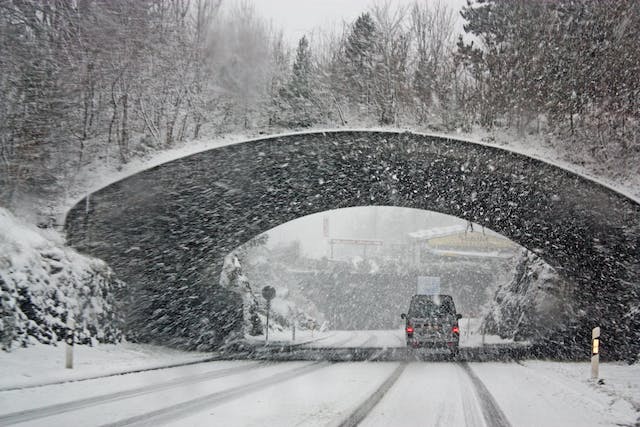The Pros and Cons of Moving During the Winter
Moving homes is always a significant event, but have you considered the unique aspects of moving during winter? This season, often overlooked for relocations, holds its own set of challenges and opportunities. In this article, we delve into the intricate details of winter moving. We'll explore everything from the potential cost savings to the hurdles posed by icy conditions. But why move during the chillier months? Is it the reduced competition for housing, or are the lower moving costs too tempting to ignore? Join us as we unravel the pros and cons, helping you decide if a winter move aligns with your needs.
Why Consider Moving During Winter
Winter, often seen as a daunting time for major changes, surprisingly offers unique advantages when it comes to moving. One of the most compelling reasons to consider relocating during this season is the potential for lower moving costs. With demand typically lower than in warmer months, many moving companies offer reduced rates, presenting a cost-effective opportunity for those on a budget. Additionally, the availability of these companies tends to be higher, allowing for more flexibility in scheduling your move. Another significant benefit is the reduced competition in the housing market. Whether renting or buying, winter often sees fewer people looking to move, leading to less competition and potentially better deals. This can make finding your dream home easier and more affordable, turning the cold months into a suitable time for relocation.
How to Save Money When Moving?
Firstly, take advantage of off-season discounts. Due to lower demand, many moving companies and rental agencies offer reduced rates in the winter. This can significantly cut down your moving expenses. Secondly, consider DIY packing and moving. By packing your belongings yourself and enlisting the help of friends or family for the move, you can save a substantial amount that would otherwise go to professional packers and movers.
Additionally, careful budgeting is essential. Set aside funds for unexpected expenses, such as last-minute supplies or potential delays due to weather conditions. This foresight can prevent financial strain and ensure a smoother transition to your new home during the colder months.
Budgeting is essential in order to save money when moving during winter.
Challenges of Relocation: Weather Woes
Relocating during winter brings its own set of challenges, with weather-related issues at the forefront. Dealing with bad weather conditions, from snowstorms on icy roads to relocating in the rain, can be significantly complicated. These conditions make transportation more difficult and can pose risks to the safety of your belongings and those involved in the move. Additionally, winter days are shorter, meaning less daylight for moving activities. This can lead to a more hectic and rushed relocation process, as tasks need to be completed in a shorter timeframe. Also, the unpredictable nature of winter weather can lead to unexpected moving delays. Flights might be canceled, roads closed, and moving services postponed, all of which require flexibility and contingency planning. This uncertainty adds an extra layer of complexity to winter relocations.

You should always be wary of sudden weather changes.
Pros and Cons of Moving During Winter
Moving during winter offers a unique blend of benefits and challenges. On the plus side, one can often take advantage of lower moving costs and greater availability of moving services due to reduced demand. This season also typically sees less competition in the housing market, making finding and securing a property easier. However, winter moves are not without their drawbacks. Harsh weather conditions can present significant obstacles, from dangerous driving conditions to potential damage to belongings. Shortened daylight hours can also compress the moving schedule, adding stress to the process. Additionally, the unpredictability of winter weather can lead to unexpected delays, requiring a flexible approach and thorough planning. Balancing these factors is key when considering a winter move, as it offers unique opportunities alongside distinctive challenges.
Setting Up Your New Home in Winter and What to Expect
⦁ Heating and Insulation Challenges: One of the first things you'll encounter is the need to ensure your new home is adequately heated and insulated. Cold weather can expose issues like drafty windows or insufficient insulation, which are crucial to address promptly for a comfortable living environment.
⦁ Seasonal Decoration and Lighting: Winter also offers the chance to adorn your new space with seasonal decorations and lighting. This not only adds a cozy and festive touch but can also help combat the shorter, darker days by creating a warm and inviting atmosphere inside your home.
⦁ Immediate Essentials for Comfort: It's important to prioritize setting up essentials that contribute to warmth and comfort. This includes unpacking blankets and clothing and setting up a functional kitchen to enjoy hot meals. Ensuring a quick setup of these comfort essentials can make the transition into your new home during winter much smoother and more enjoyable.

Personalize your new home with pretty decorations.
Ensuring a Smooth Transition
In order to guarantee a smooth transition on your winter moving day, several key steps should be followed. Start by creating a comprehensive moving day checklist. This list should include all tasks, from final packing to setting up essential services in your new home. It acts as a roadmap, helping to keep track of everything amidst the bustle of a moving day. Maintaining open communication lines with your movers is also vital. Regular updates can help manage expectations and facilitate a more coordinated effort, especially in the face of winter weather uncertainties. Additionally, you should be prepared for last-minute changes due to weather conditions. Flexibility is key; having a backup plan for potential delays or obstacles caused by snow or ice can prevent major disruptions.
Conclusion
In conclusion, moving during winter presents a unique set of pros and cons. The advantages include lower moving costs, greater availability of movers, and less competition in the housing market. However, these benefits are counterbalanced by the challenges of harsh weather, shorter daylight hours, and potential delays. Reflecting on my own experiences, I've found that while winter moving can be demanding, careful planning and flexibility can turn it into a rewarding endeavor. Ultimately, weighing these factors against your circumstances and needs is crucial.